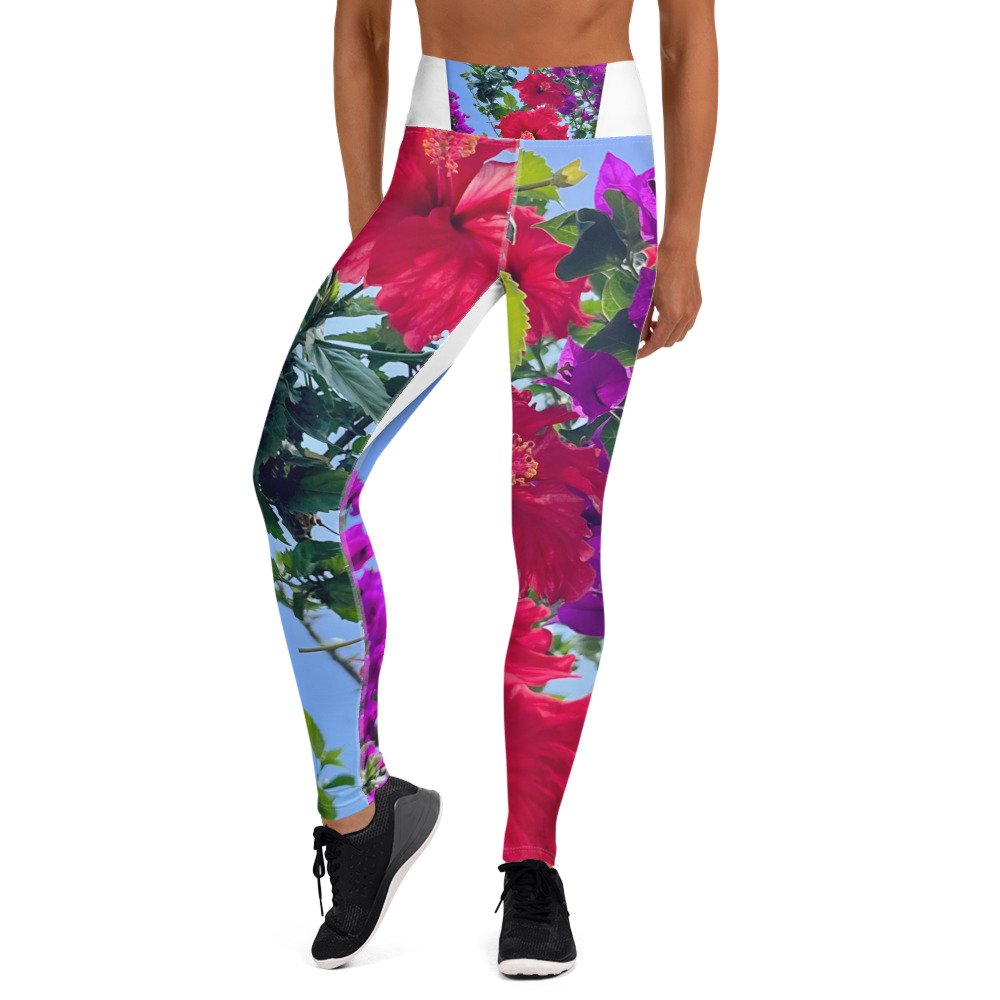The Bikini's Journey from Forbidden Beachwear to the Runways of Chanel
Unveiling the Timeless Evolution of Bikini Fashion
Summary:
Delve into the intriguing narrative behind the bikini's evolution, tracing its path from once-outlawed swimwear to gracing the prestigious runways of Chanel.
This enchanting journey unfolds the story of how these tiny two-piece swimsuits transcended controversy to become a hallmark of luxury and elegance, capturing the hearts of fashion enthusiasts worldwide.
The bikini has gone from being a forbidden taboo to being a world celebrated fashion.
From the sun-kissed shores of exclusive resort destinations to the glamorous pages of iconic fashion magazines, the journey of the bikini is a tale as timeless as the rolling waves themselves. While the concept of alluring two-piece swimwear can be traced back to the ancient splendors of Rome, it wasn't until the 1940s that the first true bikini graced the world with its presence.
Stepping into the conservative milieu of the 1950s, the bikini created waves of its own. It was a time when whispers of scandal and gasps of disbelief resonated as the unveiling of these daring ensembles ignited debates and even captured the attention of the Vatican, where the Pope himself frowned upon them as a sinful indulgence. Yet, as the swinging '60s swung into view, the bikini made its audacious transformation from the forbidden to the forefront of fashion.
Emerging from the waves of change were radiant pop culture icons like the incomparable Brigitte Bardot and the captivating Raquel Welch. Their graceful embrace of the daring two-piece not only redefined swimwear but set the stage for an era where the bikini effortlessly transitioned from scandalous to sensational.
Women display their swimsuits in the 1920’s.
The Evolution of Elegance: the Bikini’s Journey from Forbidden Beachwear to the Runways of Chanel
The world's most exquisite beaches and luxurious poolside locales became the runway, showcasing the bikini as more than mere swimwear, but as an embodiment of liberation and audacious elegance.
As the '90s dawned, the bikini's evolution took yet another glamorous turn. A vibrant array of styles, epitomized by the allure of the microkini, emerged to capture the imagination of trendsetters. Alongside these style revolutions, the luxurious realms of Brazilian waxing and radiant spray tans entered the scene, creating a harmonious symphony of sophistication that resonated from the Riviera to the Maldives.
Throughout its storied evolution, the bikini's iconic journey has been intertwined with renowned luxury brands that have etched their names into the annals of fashion history. From the chic designs of Chanel to the opulent creations of Gucci, the bikini has transcended the bounds of swimwear, becoming a symbol of refined elegance that stands testament to the eternal allure of the world's most breathtaking beaches and the glamorous figures who have embraced its exquisite form.
A stunning mosaic in a Roman villa in Piazza Armerina, Sicily, shows bikini girls.
Endurance Beyond Eras: A Glimpse into the Evolution of the Bikini
The ongoing endurance of the bikini stands as a resounding testament to the profound influence of changing social norms on the ever-evolving landscape of fashion.
From the sun-soaked shores of ancient civilizations to the modern-day runways of luxury fashion houses, the journey of the bikini captures the ebb and flow of cultural transformation.
Ancient Rome: The Birth of the Bikini The origins of the bikini trace back to the opulent mosaic-adorned floors of the Villa Romana del Casale in Sicily, Italy. Delving deep into the annals of history, to the fourth century, we encounter one of the earliest instances of the bikini's existence.
Preserved for posterity in meticulous detail, this extraordinary villa holds within its walls the tales of Roman life. Amidst its intricate mosaics, a compelling scene unfolds—an assembly of women gracefully engaging in exercise, adorned in two-piece garments that echo the essence of the bikini.
These captivating mosaics, affectionately known as the "Bikini Girls," paint a vivid picture of a bygone era, where the concept of alluring swimwear first saw the light of day. A glimpse into these ancient artistic masterpieces not only reveals the timeless allure of the two-piece silhouette but also sets the stage for the remarkable journey that the bikini would embark upon.
As we move through time, from the splendors of antiquity to modern luxury, the bikini emerges as an emblem of empowerment, style, and cultural metamorphosis.
Marilyn Monroe poses for a screen test in the movie Somethings Got to Give.
Girls on Film: Unveiling Glamour through Bikini Evolution
Captivating Cinematic Glamour The silver screen of pre-Code Hollywood beckoned a new era of allure, as midriff-baring swimsuits made their tantalizing appearance in iconic musical films like "Footlight Parade" (1933), "Flying Down to Rio" (1933), "Gold Diggers of 1933," and "Fashions of 1934."
These celluloid showcases not only transported audiences to glamorous resort destinations but also set the stage for the evolving aesthetics of swimwear. Amidst the luxuriant landscapes of old Hollywood, starlets like Ginger Rogers dazzled in ensembles that hinted at the intoxicating allure of the bikini-to-be.
The Dawn of Modern Chic
A Bikini Emerges Against the backdrop of World War II's rationing constraints, the bikini's presence surged as fabrics became a precious commodity. By 1945, two-piece swimsuits had taken root, embraced by Hollywood luminaries such as Rita Hayworth and Esther Williams. Yet, the bikini's crowning moment arrived in 1946, as French designers Jacques Heim and Louis Réard unveiled their groundbreaking renditions.
Louis Réard's daring creation, aptly named the "bikini," made a splash not only for its revealing cut but also for its cultural resonance. Simultaneously regarded as liberating and provocative, the bikini embodied a newfound sense of freedom and style. The audacious design was debuted at a Parisian poolside fashion show, boldly modeled by the showgirl Micheline Bernardini, a moment that etched itself into history. Amidst the changing tides of post-war optimism, the bikini became an iconic symbol of audacious glamour and style innovation.
Brigitte Bardot poses at the 6th Cannes Film Festival in 1953.
A Backlash Ignites
Defying Norms with Panache
The bikini's journey through time encountered its share of controversy. From its debut on the Cannes Film Festival's sandy shores to the silver screen splendor, the bikini danced at the edges of societal expectations. Brigitte Bardot's Cannes appearance in 1953 heralded a new era, as her beachside photoshoot catapulted the bikini from fashion to phenomenon, captivating European and American women alike.
With the ’60s ushering in the winds of change, social norms swayed, and casual fashion found its place. The sexual revolution's fervor brought bikinis to the forefront, manifested through the pop culture landmarks that would shape generations.
Ursula Andress's memorable white two-piece in the debut James Bond film, "Dr. No" (1962), stirred cinematic and fashion history. The bikini, now a symbol of empowerment, adorned screens and beaches alike, merging the worlds of entertainment and elegance.
Timeless Impact: A Cultural Icon Persists
The enduring legacy of the bikini is a testament to its ability to transcend eras and shape the very fabric of popular culture. From cinematic glamour to defining moments on the silver screen, the bikini's journey continues to resonate with luxury and sophistication. Its evolution embodies not only the shifting sands of fashion but also the remarkable interplay between audacity, style, and the ever-changing contours of society's aesthetic desires.
Cinematic Allure and Cultural Shifts Even with just a few lines in "One Million Years B.C.," Raquel Welch's bikini-clad portrayal held a mesmerizing grip on the film's marketing campaign.
Her scanty swimwear, dubbed "mankind's first bikini," ignited the collective imagination. Promotional images of Welch adorned bedroom walls as best-selling pin-up posters, capturing the essence of a generation's desires.
The 1980s furthered the bikini's silver screen impact. The 1982 teen comedy "Fast Times at Ridgemont High" showcased Phoebe Cates in a fiery red two-piece, while Carrie Fisher's iconic Princess Leia emerged clad in a bold "slave bikini" made of brass in 1983's "Return of the Jedi."
Fisher humorously quipped that her costume previewed "what supermodels will eventually wear in the seventh ring of hell."
Evolving Silhouettes
As bikinis journeyed from the cinematic spotlight to everyday wardrobes, the swimsuit's styles continued to evolve. The microkini, daringly baring even more skin, propelled the rise of Brazilian waxing and spray tanning.
Karl Lagerfeld, the visionary behind Chanel, unveiled his interpretation of the microkini during the iconic brand's spring 1996 show. Swimwear designer Anne Cole introduced the tankini, a trendsetting alternative featuring a top that elegantly concealed the navel.
The 1990s witnessed the transformation of bikinis from taboo to trendsetting. Officially adopted as the uniform for Olympic beach volleyball players in 1996, the bikini cemented its place in athletic and fashion history. The following year, the Miss America pageant discarded its bikini ban, allowing contestants to confidently grace the stage in two-piece ensembles.
In a bold move reflecting the shifting times, the Miss America organization in 2018 announced the elimination of the swimwear segment from its competition.
The new millennium brought with it the inaugural Miami Swim Week in 2002. Renowned labels such as Norma Kamali and Zimmermann seized the opportunity, launching their luxurious swimwear lines during this trendsetting event.
The cultural journey of the bikini, from modest beginnings to international runways, symbolizes a timeless tale of empowerment and expression.
Conclusion: A Timeless Tale of Empowerment and Elegance
The history of the bikini is a captivating journey that mirrors the evolution of societal norms, cinematic influences, and high fashion trends.
From ancient Rome's mosaic-clad "Bikini Girls" to the luxurious runways of Paris, this iconic swimwear has undergone remarkable transformations that have left an indelible mark on culture and fashion. Summing up the story of the bikini's evolution, we find:
Ancient Inspiration: The origins of the bikini date back to the fourth century with the Villa Romana del Casale mosaic in Sicily, showcasing the earliest depiction of women in two-piece garments.
Silver Screen Glamour: The cinematic world played a pivotal role in popularizing the bikini. Stars like Brigitte Bardot, Raquel Welch, and Ursula Andress showcased the bikini's allure on the big screen, forever imprinting it in the public's imagination.
Revolutionary Moments: The 1940s and 1950s marked key turning points. World War II scarcity led to fabric rationing, resulting in more daring swimsuit designs. The 1946 debut of the "bikini" by French designers Jacques Heim and Louis Réard showcased a daring split, garnering both scandal and acclaim.
Cultural Controversy: The bikini stirred up debates across nations and cultural divides. Beauty pageants faced bans, while Hollywood navigated censorship codes. The Hays Code in the U.S. restricted navel exposure, and even the Pope weighed in on the moral implications.
The Liberation Era: By the 1960s, a societal shift and sexual revolution propelled the bikini from controversial to ubiquitous. Icons like Brigitte Bardot and Ursula Andress solidified its place in pop culture, while catchy songs celebrated its allure.
Fashion Forward: The evolution of styles continued. The microkini bared more skin, and the tankini offered versatility. The bikini became the choice of athletes, leading fashion shows, and luxury lines, illustrating its timeless relevance.
In sum, the history of the bikini encapsulates an intriguing narrative of empowerment, elegance, and the ever-changing dynamics between fashion, culture, and individual expression.
From ancient artistry to the glamorous stages of Hollywood and high-fashion runways, the bikini's enduring legacy reminds us that trends may shift, but style and confidence remain timeless.
Join Ultra Unlimited: Celebrate Global Creative Culture and Embrace Healing Through Intuition
Are you ready to embark on a journey that celebrates creativity, culture, and the profound healing that accompanies the pursuit of our intuitive insights? At Ultra Unlimited, we invite you to join our vibrant community of like-minded individuals who share a passion for creative expression and holistic well-being.
Through a diverse range of engaging content, including both non-fiction and fiction pieces, we explore the depths of human creativity and the transformative power it holds. As the founder of Ultra Unlimited, I have dedicated myself to fostering an environment where artistic exploration and personal growth harmoniously coexist.
By becoming a part of Ultra Unlimited, you'll be welcomed into a space where you can connect with fellow enthusiasts, discover captivating narratives, and unlock the healing potential that resides within us all. Join us today and embrace a world of creative possibilities, where intuition leads to inspiration, and artistic expression becomes a transformative force.











































































